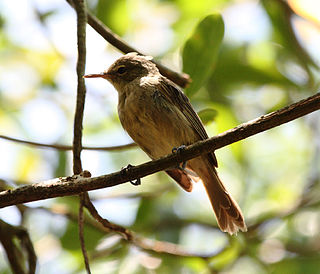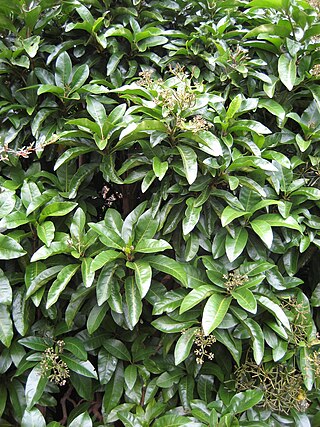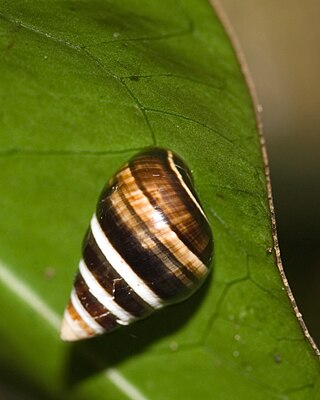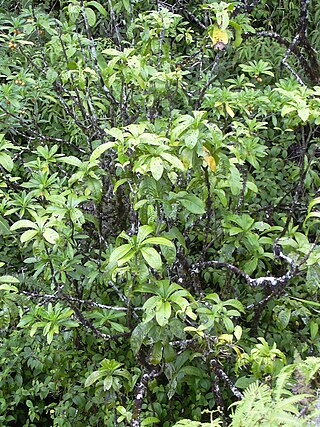
Capricornia Cays is both a national park and a scientific national park in Queensland (Australia), located 486 km and 472 km north of the state capital Brisbane respectively. Collectively they comprise 241 ha of coral cays.

The International Union for Conservation of Nature (IUCN) Red List of Threatened Species, also known as the IUCN Red List or Red Data Book, founded in 1964, is the world's most comprehensive inventory of the global conservation status of biological species. It uses a set of precise criteria to evaluate the extinction risk of thousands of species and subspecies. These criteria are relevant to all species and all regions of the world. With its strong scientific base, the IUCN Red List is recognized as the most authoritative guide to the status of biological diversity. A series of Regional Red Lists are produced by countries or organizations, which assess the risk of extinction to species within a political management unit.

Vostok Island is an uninhabited coral island in the central Pacific Ocean, part of the Line Islands belonging to Kiribati. Other names for the island include Anne Island, Bostock Island, Leavitts Island, Reaper Island, Wostock Island or Wostok Island. The island was first sighted in 1820 by the Russian explorer Fabian Gottlieb von Bellingshausen, who named the island for his ship Vostok.

The black noddy or white-capped noddy is a seabird from the family Laridae. It is a medium-sized species of tern with black plumage and a white cap. It closely resembles the lesser noddy with which it was at one time considered conspecific. The black noddy has slightly darker plumage and dark rather than pale lores.

A genet is a member of the genus Genetta, which consists of 17 species of small African carnivorans. The common genet is the only genet present in Europe and occurs in the Iberian Peninsula, Italy and France.

Pisonia grandis, the grand devil's-claws, is a species of flowering tree in the Bougainvillea family, Nyctaginaceae.

Pisonia is a genus of flowering plants in the four o'clock flower family, Nyctaginaceae. It was named for Dutch physician and naturalist Willem Piso (1611–1678). Certain species in this genus are known as catchbirdtrees, birdcatcher trees or birdlime trees because they catch birds. The sticky seeds are postulated to be an adaptation of some island species that ensures the dispersal of seeds between islands by attaching them to birds, and also allows the enriching of coralline sands. These island species include P. brunoniana of Australasia and Polynesia and P. umbellifera, which is widespread in the tropical Indo-Pacific region.

The Seychelles warbler, also known as Seychelles brush warbler, is a small songbird found on five granitic and corraline islands in the Seychelles. It is a greenish-brown bird with long legs and a long slender bill. It is primarily found in forested areas on the islands. The Seychelles warbler is a rarity in that it exhibits cooperative breeding, or alloparenting, which means that the monogamous pair is assisted by nonbreeding female helpers.

Pisonia brunoniana is a species of flowering tree in the family Nyctaginaceae that is native to New Zealand, Norfolk Island, Lord Howe Island and Hawaiʻi. The common names in New Zealand are parapara or birdcatcher tree.
Kokia kauaiensis, the Kauai treecotton or Kauaʻi Kokiʻo, is a species of flowering plant in the mallow family, Malvaceae, that is endemic to Kauaʻi, Hawaii.

The Henderson crake or red-eyed crake is a species of flightless bird in the family Rallidae. It is endemic to Henderson Island in the southeast Pacific Ocean. Its natural habitat is subtropical or tropical moist lowland forest.

Achatinella mustelina is a species of air-breathing land snail, a terrestrial pulmonate gastropod mollusc in the family Achatinellidae. This species is endemic to the Waianae Range of the island of Oahu, Hawaii.

Helicia is a genus of 110 species of trees and shrubs, constituting part of the plant family Proteaceae. They grow naturally in rainforests throughout tropical South and Southeast Asia, including India, Sri Lanka, Indochina, Peninsular Malaysia to New Guinea and as far south as New South Wales.
Pisonia donnellsmithii is a species of plant in the family Nyctaginaceae. It is found in El Salvador and Guatemala. It is threatened by habitat loss.
Pisonia ekmani is a species of plant in the Nyctaginaceae family. It is endemic to Cuba.
Ceodes gracilescens is a species of plant in the Nyctaginaceae family. It is a tree endemic to the island of Tahiti in the Society Islands of French Polynesia.
Pisonia sechellarum is a species of flowering plant in the family Nyctaginaceae. It is indigenous to the Seychelles and the Comoros archipelago. In Seychelles, it is limited to Silhouette Island, where it is the dominant tree but has a total population of about 190 individuals.

Pisonia wagneriana, the pāpala kēpau or Kauaʻi catchbirdtree, is a species of flowering tree in the Bougainvillea family, Nyctaginaceae, that is endemic to Kauaʻi in the Hawaiian Islands. It is threatened by habitat loss.

Ceodes umbellifera, synonym Pisonia umbellifera, commonly known as the birdlime tree or bird catcher tree, is a species of plant in the Nyctaginaceae family. The evergreen shrub has soft wood, small pink or yellow flowers, and produces cavate brown fruit throughout the period March to April. The species has been categorized under different genera in its documented lifetime, being reallocated between Pisonia and Ceodes. Its former genus, Pisonia, is named after a Dutch scientist, Willem Piso, and umbellifera is derived from Latin umbelliferum, denoting the species' big, 'shade-carrying' foliage.

The Terre-de-Haut racer is a species of snake found in the Caribbean, on the Lesser Antilles. This species is endemic to Terre-de-Bas Island and Terre-de-Haut Island which make up the Îles des Saintes. Terre-de-Bas and Terre-de-Haut are very small islands with a total area of approximately 13 km2. Because of its presence only on this small area, it is a highly protected species.















